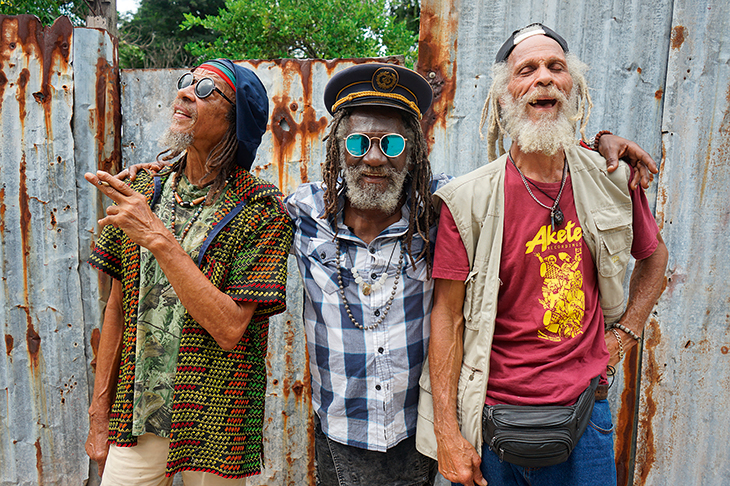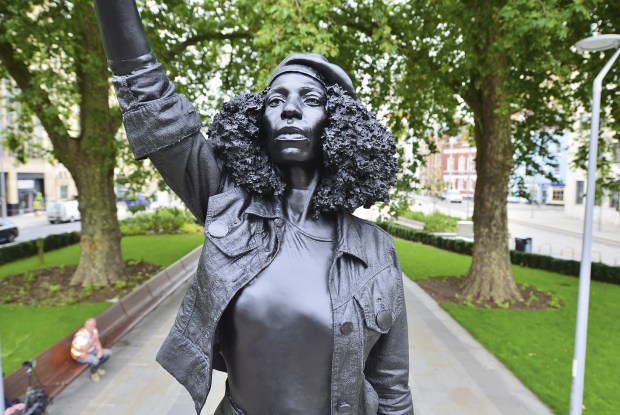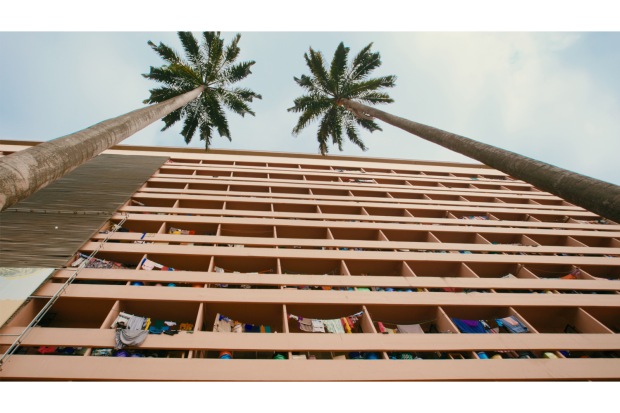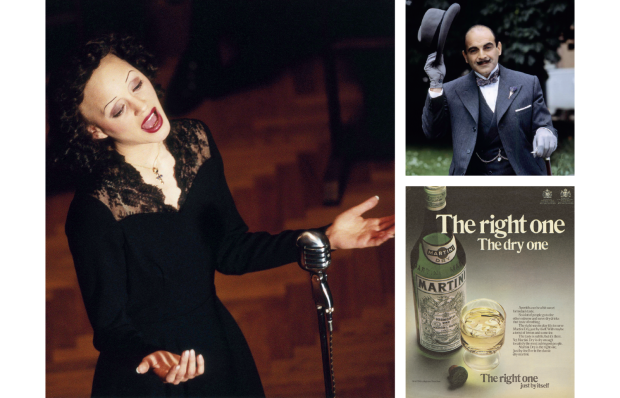Acamera sweeps across the verdant, shimmering beauty of Jamaica before descending on to a raffishly charming wooden house built into the hills. We’re at a music studio where four of the pioneers who gave birth to reggae are congregated to record a new album.
‘It’s tranquil, a real feeling of nature, just birds, trees and the wind,’ says 71-year-old Ken Boothe, whose seductive voice is smooth as rum, just as it was in 1974 when ‘Everything I Own’ stormed the British charts.
Boothe is one of the stars of a beguiling new documentary, Inna De Yard, about the rise and fall of roots reggae, which reached its peak in the late 1970s with Bob Marley’s ‘conscious’ lyric-writing and is now witnessing a revival.
What made the music so distinctive were two key elements: earnest harmonies, especially of the Rastafarian reggae singers, underpinned by the characteristic ‘one drop’ of the rhythm guitar and bass drum. It heralded a simple ‘dirt music’, grounded in the sun-baked earth of Jamaica’s ghettos, such as Trench Town, from where it emerged.
Fundamentally, roots reggae was a music of black liberation, a narrative of freedom from subjugation: either in escaping to mythical Mother Africa or in death, over which the slave master and his colonial successor held no dominion. When, in ‘Talkin’ Blues’, Marley sang ‘cold ground was my bed at night/ and rock was my pillow too’, his compatriots recognised it as real-life biography; his suffering was theirs. Rooted in hope and redemption, these searing, ethereal songs evoked an eternal life beyond this one, its lyrics peppered with reflections on the remembrance of slavery, most soulfully rendered in Peter Tosh’s ‘Stop That Train’. But embedded in these serious themes were wit and optimism. As the Heptones sang in ‘Sufferer’s Time’, the popularity of reggae meant ‘a time fe sufferer’s drive big car/ a time fe sufferer’s live it up’.
After Marley’s death in 1981 that spiritually uplifting old-school reggae was eclipsed by harsher-sounding dancehall stars whose music was characterised by highly sexualised ‘punany’ lyrics. The cultural coup was confirmed by 1990 when Bunny Wailer (one of the three original Wailers) was bottled off stage by a young crowd at the Sting Festival.
Like many of his contemporaries, Wailer seemed thereafter to withdraw from performing. Premature decline also affected Kiddus I, Winston McAnuff and Cedric Myton, who along with Ken Boothe (the godfather of reggae) star in Inna De Yard. All four, in past decades, suffered terrible misfortunes and yet, late in their careers, they find themselves lauded, in a remarkable turnaround. The documentary charts them coming together on the remote outskirts of Jamaica’s capital, Kingston, to record an album in a makeshift studio known locally as music mountain.
Here, Nyabinghi drummers join the Rastafarian singers in drawing out what Kiddus I calls ‘the natural mystic of the location. It’s all contributing to the primal acoustic sound, a vibration from the past, from Africa, from the days of slavery.’
Inna De Yard conjures a golden period of Jamaican music. As a child Boothe remembers standing outside of theatres in awe of singers passing through, as other youngsters competed to carry the stars’ flypacks (containing their stage outfits) guaranteeing them free entry to the venue.
‘I so wanted to be a star,’ says Boothe, ‘their glamour was awesome.’ Starting out in the 1960s as a Blues singer in the mould of Louis Prima, Boothe emerged at the forefront of a new, faster-paced fusion of blues and mento (a local folk music): ska.
The music was also recorded ‘fast, fast,’ remembers Myton (original lead singer of the Congos). ‘When we go to the studio is a one shot. With the live band playing. It’s totally changed now; you can lay the rhythm and overdub the voice. But back then you have to be sharp, like a Gillette!’
Speaking on the phone to each of the quartet individually, it’s immediately apparent that all have that strange mix often found in Jamaican musicians: mischief and mercurial majesty.
Inna De Yard evolves as a sequence of chapters capturing them in profile as they rehearse inna de yard both for the album and the start of a European tour.
Myton, the most eccentric-seeming (he strikes a series of Usain Bolt-like poses on stage), is heartened but not surprised by the new young European audience that has ‘discovered’ old-school reggae. ‘The music speaks to the yearning for spirituality. Something is wrong and people are searching for some form of redemption.’
I wonder what the Rasta-loving Europeans make of Boothe when he appears on stage dressed, typically, to a point beyond distinction, in an evening jacket. ‘But I am a Rasta man,’ he objects, affronted by my ignorance. ‘Look here, what is Rasta? You don’t have to be dreadlocks to be a Rasta. It’s not a fashion; it’s a way of life.’
All are committed to the notion of music as a tool for healing. Kiddus I, aka ‘Dr Feelgood’ after his reputation for sourcing the best marijuana on the island, famously joined Bob Marley on stage for the 1978 ‘One Love Peace Concert’. Back then musicians united to try to bring about an end to hostilities between rival gunmen of Jamaica’s political parties trapped in a near civil war. It was a time, recalls the regal Judy Mowatt in the film, when music bore witness to the urgency and jeopardy of life: ‘Reggae music was people’s news. If a man get shot the singers would make a song of it.’
Kiddus I was touted as a successor to Marley but he’s glad it didn’t turn out that way. ‘Because anyone who is a threat to the establishment is always taken out in some way, nullified, any defiant voice… I was said to be too abrasive in the 1970s. I was always self-produced. I would work and get my likkle money.’ When he did work with other producers, such as Lee ‘Scratch’ Perry, it always seemed to result in some inexplicable calamity. The master tapes of 20 songs he recorded with Perry have never been found. ‘I am the most recorded unreleased artist in Jamaica,’ he says drily.
A stalled career also befell Myton, but nonetheless his exuberance crackles down the phone line. Unprompted, he starts singing ‘row fisherman row’, the lyrics from his most admired song. He’d happily sing for free, he tells me. In recent years he’s had little choice.
‘The relationship [with the record company] was damaging from the beginning. I haven’t received a penny in royalties from “Row Fisherman” in more than 20 years. My last payment was in 1998.’
The trauma of a hiatus resonates with the most youthful member, 62-year-old Winston McAnuff, aka ‘Electric Dread’ because of his high-velocity stage presence. ‘I had an album for 20 years playing everywhere, wasting time for an opening that was never going to happen. Twenty years later that same album, Diary of the Silent Years, is now a hit in France. It’s not really a resurrection; it’s just a case of when the fruit is ripe.’
That sweet reward was short-lived, a point emphasised in the documentary when it drops down a gear to focus on the randomness of violence that has scarred Jamaica. One musician recounts how, caught in the crossfire of rival gangs, his sister was shot dead in her yard; the group’s heartrending song ‘Be Careful’ is a tribute to her and also to McAnuff’s son who was murdered in 2012. In a filmed concert in Paris, Electric Dread stands like a sentinel at the edge of the stage staring out over the crowd. ‘For a long time I couldn’t sing that song; it was too heavy. Losing a youth, I don’t wish that ’pon anybody. I felt suicidal.’
Repairing the connection between generations is central to the documentary. It asks implicitly whether those who rejected singers like Bunny Wailer can ever be drawn back to what Inna De Yard has to offer.
‘Every generation has key musicians,’ says Boothe, ‘and it’s up to them to take care of the music’s legacy. If this generation doesn’t know what they’re doing with the music we’ll lose it.’
McAnuff laments the grip dancehall’s ‘below the waist’ music currently exerts over the culture. He asserts that it’s antithetical to the soul of Jamaica: ‘The singers have to come back!’ With Inna De Yard there are signs of their return. ‘We’re trying to uplift the music and, with it, uplift the people.’
Kiddus I echoes the sentiment: ‘At this moment in my seventies, I’m on a platform on a runway, lifting up. Where creation allows me to go that’s where we’ll go.’
Got something to add? Join the discussion and comment below.
Get 10 issues for just $10
Subscribe to The Spectator Australia today for the next 10 magazine issues, plus full online access, for just $10.
You might disagree with half of it, but you’ll enjoy reading all of it. Try your first month for free, then just $2 a week for the remainder of your first year.














Comments
Don't miss out
Join the conversation with other Spectator Australia readers. Subscribe to leave a comment.
SUBSCRIBEAlready a subscriber? Log in